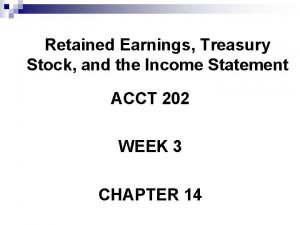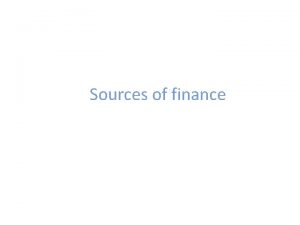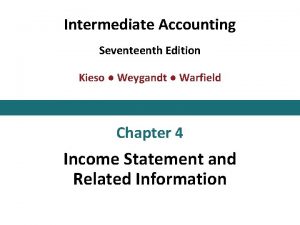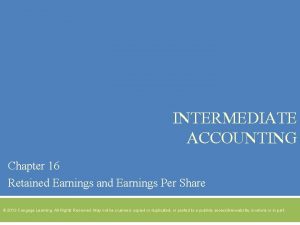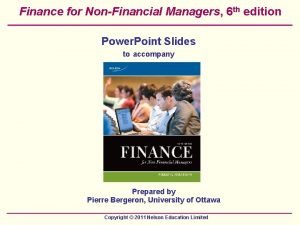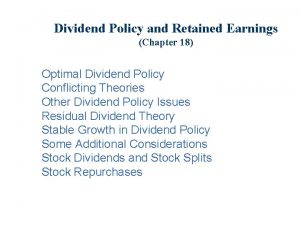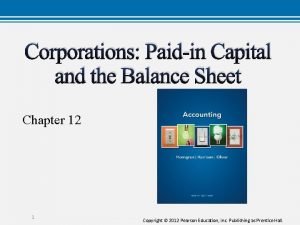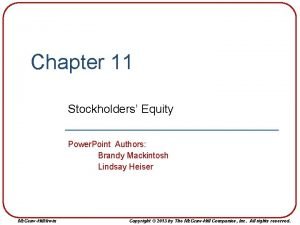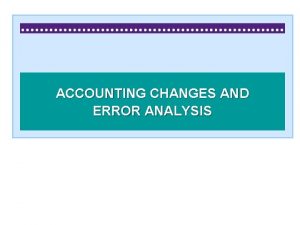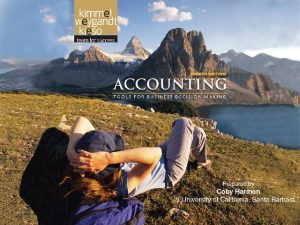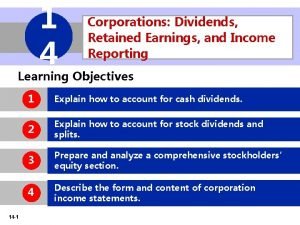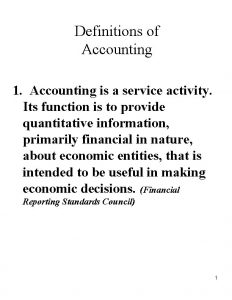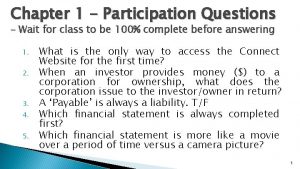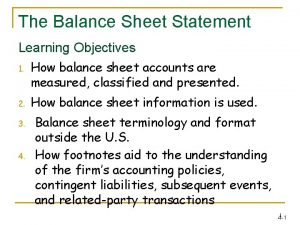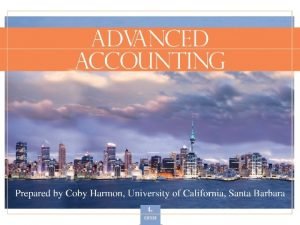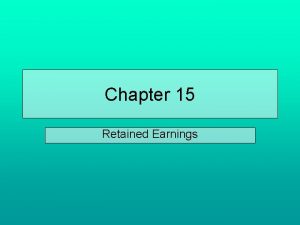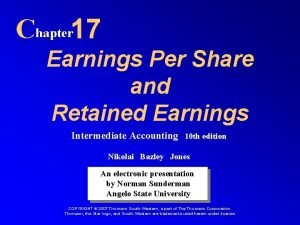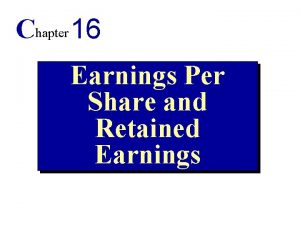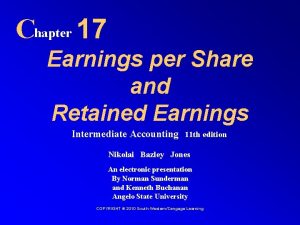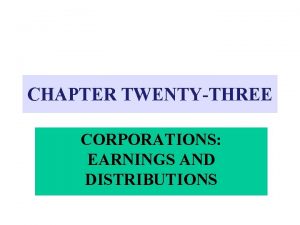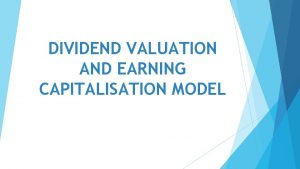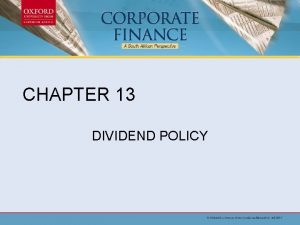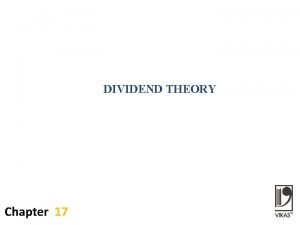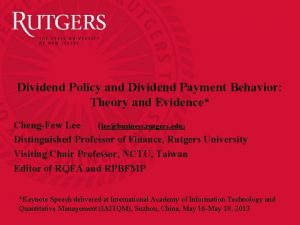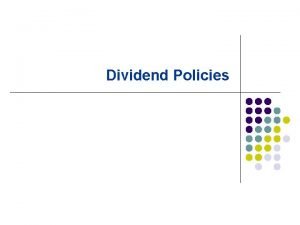Dividend Policy and Retained Earnings Chapter 18 Optimal















- Slides: 15

Dividend Policy and Retained Earnings (Chapter 18) Optimal Dividend Policy Conflicting Theories Other Dividend Policy Issues Residual Dividend Theory Stable Growth in Dividend Policy Some Additional Considerations Stock Dividends and Stock Splits Stock Repurchases

Optimal Dividend Policy n The optimal dividend policy should maximize the price of the firm’s stock holding the number of shares outstanding constant. A decision to increase dividends will raise D 1 putting upward pressure on P 0. Increasing dividends, however, means reinvesting fewer dollars, lowering g, and putting downward pressure on P 0. n Problem: What is the correct balance between dividends and retained earnings?

Conflicting Theories n Dividend Policy is Irrelevant: (Dividend Irrelevance Theory) n Assuming: – No transactions costs to buy and sell securities – No flotation costs on new issues – No taxes – Perfect information – Dividend policy does not affect ke n Dividend policy is irrelevant. If dividends are too high, investors may use some of the funds to buy more of the firm’s stock. If dividends are too low, investors may sell off some of the stock to generate additional funds.

Conflicting Theories (Continued) n High Dividends Increase Stock Value: (Bird-in-the-Hand Theory) n Dividends are less risky. Therefore, high dividend payout ratios will lower ke (reducing the cost of capital), and increase stock price.

Conflicting Theories (Continued) n n Low Dividends Increase Stock Value: (Tax Preference Theory) Dividends received are taxable in the current period. Taxes on capital gains, however, are deferred into the future when the stock is actually sold. In addition, the maximum tax rate on capital gains is usually lower than the tax rate on ordinary income. Therefore, low dividend payout ratios will lower ke (reducing the cost of capital), raise g, and increase stock price.

Conflicting Theories (Continued) n Empirical Evidence: – No conclusive proof, one way or another. – Difficult to hold the rest of the world constant while we study dividend policy. – Cannot measure the cost of equity (ke) with a high degree of accuracy.

Other Dividend Policy Issues Clientele Effect: Investors needing current income will be drawn to firms with high payout ratios. Investors preferring to avoid taxes will be drawn to firms with lower payout ratios. (i. e. , firms draw a given clientele, given their stated dividend policy). Therefore, firms should avoid making drastic changes in their dividend policy. n Information Content: Changes in dividend policy may be signals concerning the firm’s financial condition. A dividend increase may signal good future earnings. A dividend decrease may signal poor future earnings. n

Residual Dividend Theory n Retain and reinvest earnings as long as returns on the investments exceed the returns stockholders could obtain on other investments of comparable risk. This concept is illustrated graphically below. A corporation should retain all necessary earnings to invest up to the level indicated by the intersection of the MCC (marginal cost of capital) and IOS (investment opportunity schedule) functions. Residual earnings are distributed to shareholders. Percent MCC IOS Amount of Capital ($millions)

Stable Growth in Dividend Policy n Most corporations attempt to maintain a stable growth in dividend policy: – Many financial institutions invest only in companies with regular dividend payments. – Perhaps leads to higher stock prices: (Lower risk - lower ke - higher P 0) As a result, dividends tend to be a function of the “sustainable growth” in earnings.

Stable Growth in Dividend Policy (Cont) Dollars Per Share EPS DPS Year

Some Additional Considerations n n n Legal Restrictions: Dividends cannot be paid out of the permanent capital accounts. Liquidity: Retained earnings and cash are not identical. Access to other sources of financing. Stability of earnings. Restrictions in debt contracts.

Some Additional Considerations (Continued) Ownership Control: Smaller firms may be averse to issuing new stock due to dilution of corporate control. Therefore, retain earnings and pay few dividends. n Inflation: Since replacement costs of assets are higher in inflationary periods, more retention of earnings may be required. n Dividend Reinvestment Plans: Investors can automatically reinvest dividends often at a discount with no transaction costs. Frequently a good investment tool. Companies may use these plans to raise additional equity capital. n

Stock Dividends Accounting for stock dividends: Retained Earnings xxxx Common Stock xxxx Paid-in-Capital xxxx n The market value of the stock dividend is taken out of retained earnings and placed into the permanent capital accounts. n Stock Splits No changes in the capital accounts. n Par value decreased. n Number of shares outstanding increased. n

The Impact on Stockholders’ Wealth of Stock Dividends and Stock Splits Everything else remaining the same, stock dividends and stock splits do not increase stockholder wealth. Perhaps, however, they are beneficial in the long-run due to the “optimal price range” concept. n Price may rise, however, if other variables also change (e. g. , cash dividends increase, higher expected future earnings) n

Stock Repurchases (A Corporation Acquires its Own Stock) Alternative to cash dividends: Shares outstanding are reduced, EPS increases, and if the P/E does not change, the stock price increases. (i. e. , capital gains are substituted for cash dividends). Stock repurchases may be a sound strategy for firms with “temporary” excess cash. n Share price too low: Outstanding shares may be repurchased to drive the stock price up to a “more appropriate” level. n Change the capital structure quickly: Issue debt and use the proceeds to buy back outstanding stock. n
 Treasury stock income statement
Treasury stock income statement Debentures advantages and disadvantages
Debentures advantages and disadvantages Income statement discontinued operations
Income statement discontinued operations Intermediate accounting chapter 16
Intermediate accounting chapter 16 Revenue minus expenses equals
Revenue minus expenses equals Retained earnings in accounting
Retained earnings in accounting Return on common stockholders’ equity
Return on common stockholders’ equity Retained earnings accumulated deficit
Retained earnings accumulated deficit Change in accounting principle retrospective
Change in accounting principle retrospective Retained earnings ifrs
Retained earnings ifrs Return on common stockholders’ equity
Return on common stockholders’ equity Bookkeeping is a mechanical task which involves
Bookkeeping is a mechanical task which involves Components of retained earnings
Components of retained earnings Statement of retained earnings formula
Statement of retained earnings formula Equity method vs cost method
Equity method vs cost method Book value per ordinary share
Book value per ordinary share
